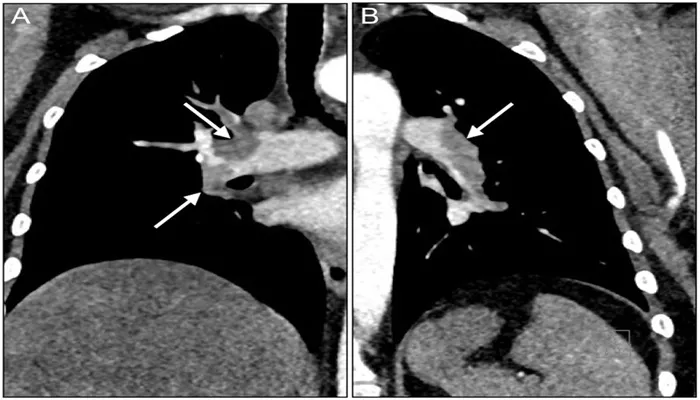Hypothyroidism, a condition where the thyroid gland underperforms and produces insufficient thyroid hormones, can have far-reaching effects on the body. Pulmonary hypertension (PH), characterized by high blood pressure in the arteries of the lungs, is a potentially life-threatening condition that can result from various causes. The relationship between hypothyroidism and pulmonary hypertension has been studied for years, revealing a complex and often overlooked connection. This article will delve into how hypothyroidism may contribute to the development of pulmonary hypertension, examining the underlying mechanisms, symptoms, diagnosis, and treatment options for individuals affected by both conditions.
The Relationship Between Hypothyroidism and Pulmonary Hypertension
Several studies have suggested that hypothyroidism may play a role in the development of pulmonary hypertension. The thyroid hormones regulate many essential body functions, including heart rate, metabolism, and blood vessel dilation. When thyroid function is compromised, the resulting hormone imbalance can affect the cardiovascular system, potentially leading to pulmonary hypertension. Although the exact mechanisms remain complex, understanding this relationship is crucial for managing both conditions effectively.
How Hypothyroidism Affects the Cardiovascular System
The thyroid hormones—thyroxine (T4) and triiodothyronine (T3)—have a direct impact on cardiovascular health. These hormones help regulate the contraction of the heart, vascular tone, and the body’s metabolism. When hypothyroidism occurs, the deficiency in thyroid hormones can result in slowed heart rate (bradycardia), reduced cardiac output, and increased peripheral vascular resistance. These changes can disrupt the normal functioning of the heart and blood vessels, increasing the risk of developing pulmonary hypertension.
The Role of Pulmonary Circulation in Hypothyroidism
Pulmonary circulation is the flow of blood from the heart’s right side through the lungs and back to the left side of the heart. Thyroid hormones help regulate blood vessel tone, including that of the pulmonary arteries. In hypothyroidism, the reduced thyroid hormone levels can lead to an increase in pulmonary vascular resistance, which is a key factor in the development of pulmonary hypertension. This resistance causes the heart to work harder to pump blood through the lungs, ultimately leading to higher pressure within the pulmonary arteries.
Symptoms of Pulmonary Hypertension in Hypothyroidism
When hypothyroidism contributes to pulmonary hypertension, symptoms may be subtle at first. However, over time, patients may experience the following signs and symptoms:
- Shortness of breath (dyspnea), especially during physical activity
- Fatigue or extreme tiredness
- Chest pain or discomfort
- Swelling in the legs, ankles, or abdomen (edema)
- Dizziness or fainting (syncope)
- Persistent cough
These symptoms often overlap with those of hypothyroidism itself, making it difficult to distinguish between the two conditions without further testing. Additionally, pulmonary hypertension can progress silently, with minimal symptoms in the early stages, further complicating diagnosis.
Diagnosing Pulmonary Hypertension in Hypothyroid Patients
Early diagnosis of pulmonary hypertension in hypothyroid patients is critical for preventing long-term complications.
Diagnosis typically involves a combination of clinical evaluation, imaging tests, and functional assessments. The following diagnostic tools are commonly used:
1. Echocardiogram
An echocardiogram is a non-invasive ultrasound test that provides images of the heart and its function. It can be used to assess the pressure in the pulmonary arteries and determine whether pulmonary hypertension is present.
2. Right Heart Catheterization
Right heart catheterization is the gold standard for diagnosing pulmonary hypertension. During this procedure, a catheter is inserted into the right side of the heart to measure the pressure in the pulmonary arteries directly. This test is usually performed if the echocardiogram suggests the presence of PH.
3. Pulmonary Function Tests
Pulmonary function tests (PFTs) can assess lung function and determine whether any underlying pulmonary disease may be contributing to the symptoms. These tests can also help rule out other potential causes of dyspnea and other respiratory symptoms.
Management and Treatment of Pulmonary Hypertension in Hypothyroidism
Managing pulmonary hypertension in patients with hypothyroidism involves addressing both the thyroid deficiency and the elevated pulmonary pressure. The following approaches may be used to treat these conditions:
1. Thyroid Hormone Replacement Therapy
The cornerstone of hypothyroidism treatment is thyroid hormone replacement. Levothyroxine, a synthetic form of T4, is commonly prescribed to normalize thyroid hormone levels in patients with hypothyroidism. Once thyroid function is restored, it may help improve the cardiovascular system’s response and reduce the severity of pulmonary hypertension. Regular monitoring of thyroid function is essential to adjust the dosage and ensure optimal management.
2. Medications for Pulmonary Hypertension
For patients with confirmed pulmonary hypertension, specific medications may be necessary to lower pulmonary artery pressure. These may include:
- Endothelin receptor antagonists (ERAs), which help relax and dilate the pulmonary arteries
- Phosphodiesterase inhibitors (e.g., sildenafil), which can improve blood flow and reduce pulmonary pressure
- Prostacyclin analogs, which are potent vasodilators
3. Lifestyle Modifications
In addition to medication, lifestyle changes can play a crucial role in managing both hypothyroidism and pulmonary hypertension. These may include:
- Regular physical activity to improve cardiovascular health and blood flow
- A balanced diet, particularly one that supports thyroid function and reduces inflammation
- Avoiding smoking and excessive alcohol consumption, both of which can exacerbate cardiovascular problems
4. Oxygen Therapy
In more severe cases of pulmonary hypertension, oxygen therapy may be required to improve oxygen levels in the blood and reduce strain on the heart and lungs. This treatment can help alleviate symptoms like shortness of breath and fatigue.
Conclusion
The prognosis for patients with hypothyroidism-induced pulmonary hypertension largely depends on the severity of the conditions and the promptness of treatment. If treated early and effectively, many patients can experience improvements in both thyroid function and pulmonary pressure. However, if left untreated, pulmonary hypertension can lead to heart failure and other serious complications.
It is essential for individuals with hypothyroidism to be regularly monitored for cardiovascular health, especially if they experience symptoms of pulmonary hypertension. Timely interventions can significantly improve the quality of life and prevent severe outcomes.
Related topics:


